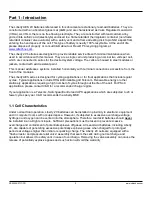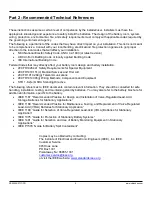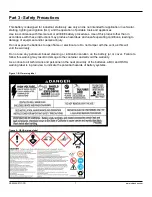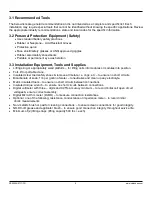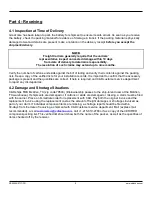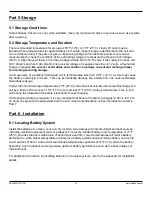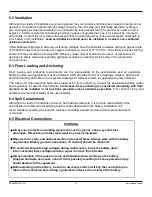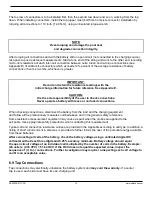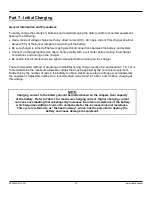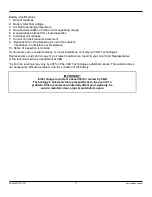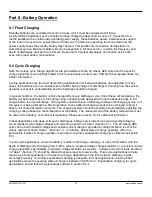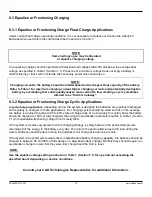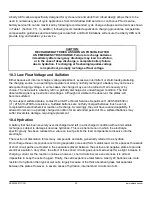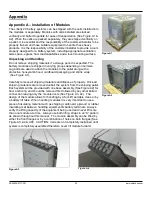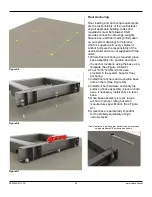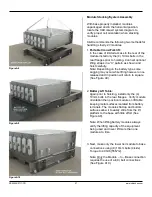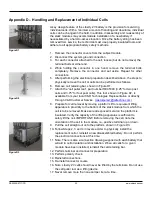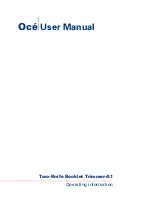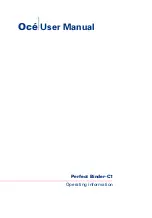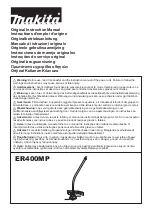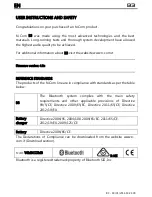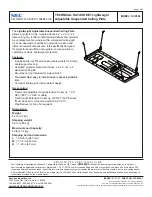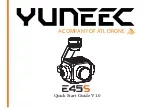
RS02250/0717/CD
18
www.cdtechno.com
Part 8 - Battery Operation
8.1 Float Charging
Standby batteries are connected to control circuits, which must be energized at all times.
Liberty AES 2V batteries must be constant voltage charged as described in section 7. Connected to a
load in parallel with a continuously operating power supply, these batteries assure instantaneous support
of the load in the event of a power failure or brownout. In addition to operating the connected load, the
power supply keeps the standby battery fully charged. This parallel interconnection and operation is
called float service. Maximum battery life can be expected in full float service, in which the frequency and
depth of discharges are kept at a minimum. Deep and/or frequent discharges can shorten service life,
even with proper battery maintenance.
8.2 Cycle Charging
Note: Numerous cycle charge algorithms are permissible with the 2V Liberty AES cells and if the specific
charge algorithm is not explicitly stated in this manual please contact your C&D technical representative for
further information.
Cycling applications are the most demanding applications that lead acid batteries are subjected. In many
cases, the batteries are in a constant state of either being charged or discharged. Knowing how the system
operates is critical to understanding how the batteries should be charged.
In typical conditions, the battery is fully charged after every discharge cycle. Under these circumstances, the
battery will be brought back to full charge using a charging rate designed to bring the batteries back to full
charge before the next discharge. If the system cannot achieve a full charge between discharging cycles, or if
the system is being utilized in a PSoC operation, then additional charging needs to be employed to bring it
back to full charge at least once month. The charging system should be capable of automatically adjusting the
charging voltage based on the temperature of the battery. The measurement of the battery temperature must
be taken at the battery; not ambient temperature. Please see section 8.4 for additional information.
In float applications with deep or frequent discharges, battery service life can be maximized by following
recommended cycle charge voltages and currents as shown in Table 1 (Section 7.1). The 2V Liberty AES
cells can be both constant voltage and constant current charged, provided a voltage limitation is set at the
values recommended in Table 1 (Section 7.1). In addition, partial state of charge operation (PSoC) is
permissible if state of charge regulation is provided or periodic equalization charging is utilized (see section
8.3).
In pure cycle applications, where the battery is either in discharge, recharge, or open circuit stand, with the
depth of discharge (DoD) ranging from 5-90%, either a constant voltage charge algorithm or a constant current
charge algorithm is permissible, provided a voltage limitation is provided. Voltage and current limits provided
in Table 1 (Section 7.1) should be utilized to ensure maximum service life. Pure cycle applications will also
require a periodic equalization or freshening charge, depending on the time between discharge cycles.
Generally bi-weekly or monthly equalization charging is adequate for most applications including PSoC
applications where the average state of charge is between 30-90% SoC. Equalization charging, for cyclic
applications, should follow the procedures outlined in section 8.3.2


